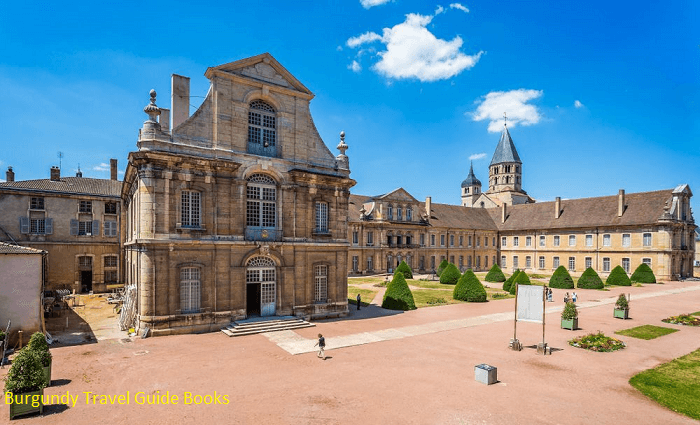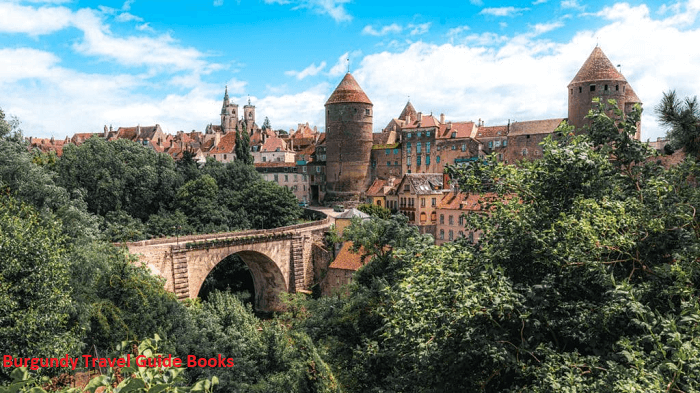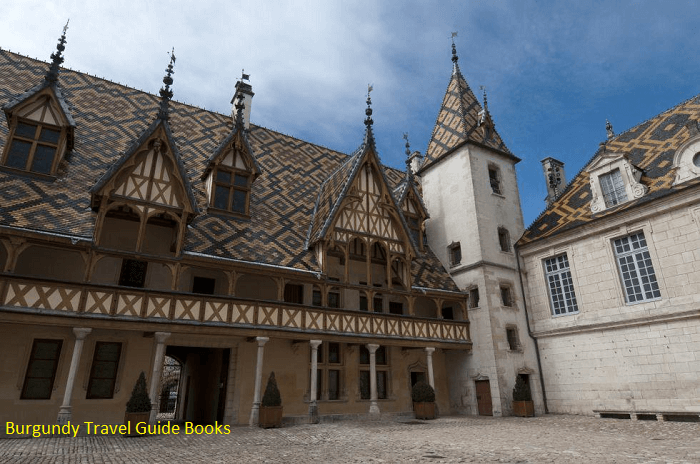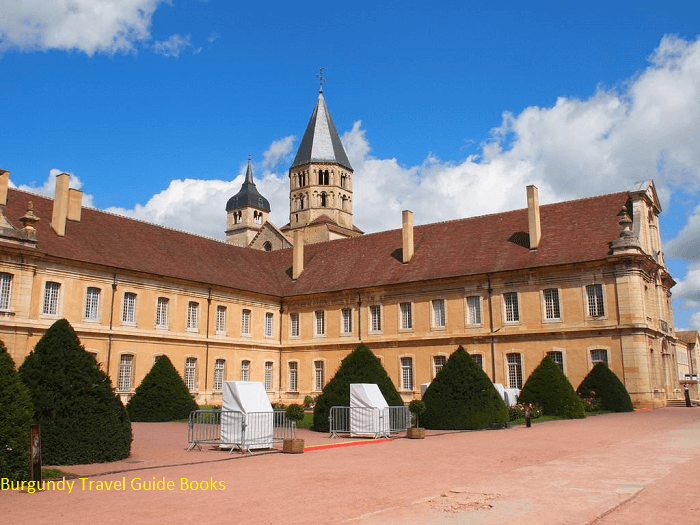Definitive Burgundy Travel Guide to Burgundy Books:
Burgundy Travel To Discover One of France’s Most Stunning Areas Burgundy, in central France, is a place that’s full of history and culture and produces some of the world’s most famous wines. From its rolling vineyards, quaint villages, and mediaeval towns, people travel from all over the world to visit this coveted region of France.
A great travel guidebook to Burgundy could be crucial for someone looking to take a trip through this beautiful region of France. Whether you are searching for the best wines to taste, which historic sites are most worth visiting, or just want to know more about the region’s special heritage, there are some fabulous Burgundy travel guides that can assist you with it all.
This article will explore the best travel guides for Burgundy, taking into account local foodstuff, wine routes, outdoor activities, and historical landmarks, among other things.
1. “Rick Steves France”—Rick Steves: Burgundy Travel
Rick Steves is a name I’m all too familiar with in the way of travel guidebooks, especially his book that is full of long, easy-to-follow itineraries for travellers to Europe. And this book, Rick Steves France, covers a tremendous amount of the country, with one section dedicated entirely to Burgundy.
Here is the advice of Steves on how to discover the region’s big attractions without too much detail, as some other tour guides provide. Burgundy wine country, picturesque villages, and historical towns are all featured, along with practical suggestions, such as hotel and restaurant recommendations and transportation.

Burgundy: Burgundy Travel
Practical information: Steves aims to make travelling as easy as possible. His book regarding Burgundy contains very specific guidance on how to get from town to town, plus good recommendations for transportation and accommodation.
Wine-oriented itineraries: This guidebook contains wine-related itineraries that can help tourists discover the fine wine country of Burgundy-from the Côte de Nuits to the Côte de Beaune.
Cultural knowledge: Steves offers the visitor holistic knowledge about the region’s history and cultural surroundings, making it a great guide for first-timers in Burgundy.
“The Burgundy Travel Guide”—Insight Guides:
Insight guides are famous for their wonderful photos and deep cultural exploration. Nothing is an exception to this rule in “The Burgundy Travel Guide,” offering a detailed overview of the region’s history, architecture, and natural beauty.
This guide has thorough sections on the region’s principal towns and cities—including Dijon, Beaune, and Chablis. It includes every attraction, from France’s most recognisable landmarks and châteaux to the region’s cherished traditions and cuisine, as well as numerous recommendations for things to do and see.
Why great for Burgundy:
Cultural depth: This is an excellent choice for travellers who want to learn about the history and culture behind these places. It goes well beyond the basic information, with really interesting historical tidbits of how Burgundy fits into French and European history.
Comprehensive maps and itineraries : the book holds helpful maps and suggested itineraries for a visitor to make the best use of his or her time in Burgundy, whether one is a wine lover, history enthusiast, or nature lover .
Good pictures and illustrations: photographs and illustrations in the book demonstrate the beauty of Burgundy and drive inspiration to visit the place.

“Burgundy TravelGuide”—Lonely Planet:
Lonely Planet is another torchbearer in the world of travel guidebooks, and their Burgundy Travel Guide remains one of the most trusted resources one can avail of while exploring this region. Although one of the relatively less covered regions of France, Lonely Planet more than makes up for this lacuna by its sharp focus on the essentials.
The Lonely Planet Burgundy guidebook gives information on topics such as top sights, regional specialties, local wines, and outdoor activities. From the mediaeval town of Vézelay to the vineyards of Chablis, Lonely Planet guides tourists to the best of Burgundy.
Why great for Burgundy: Burgundy Travel
Practical information: Practical details are the hallmark of Lonely Planet’s information book. The book includes all information a traveller may need to know when travelling: things like accommodations, transports, and dining recommendations.
Wine expertise: Burgundy is arguably one of the better-known wine regions in the world and this guide does a great job at covering local wine culture. The book will give recommendations for visits and tastings in the vineyards as well as information on wine appellations throughout Burgundy.
Organised clearly: The book is fairly well-structured with sections for specific areas like Dijon, Beaune, and the wine routes, which makes it easy for readers to find exactly what they’re looking for.

4. “Burgundy and the Wine Route”—Cadogan Guides:
For those who approach wine almost seriously, there is a specialist travel book, Burgundy and the Wine Route, by Cadogan Guides, that focuses exclusively on the region’s most famous export: its wines. The guidebook offers expert guidance on how to navigate through the wine routes of Burgundy, explore its vineyards, and find out more about its local wine-making traditions.
Comprehensive profiles for the most famous wineries, tips for a tasting session, and itineraries for aficionados can be found in this book. It also gives travellers an idea of the perfect times to visit so that they may schedule visits when the harvest or festivals are in season.
Why it is great for Burgundy:
Wine-focused: It’s just what the wine lover would need—replete with rich recommendations on the best vineyards, wine tours, and tasting experiences throughout Burgundy.
Authentic recommendations: Cadogan’s travel guides specialise in more unusual experiences. In Burgundy, this means lesser-known wineries and sleepy towns that the larger guide may not have.
Insider tips: Authors often make insider recommendations about wines to look out for and where to find a rare bottle, making this guide valuable for connoisseurs.
5. “Burgundy: A Regional Guide”—Fiona Duncan:
Burgundy: A Regional Guide by Fiona Duncan is an itinerary guide to be used by explorers who look for deeper insights into the history, geography, and culture of the region. It weaves practical travel information together with an excellent narrative about the people and places of Burgundy.
The guide covers the period of ancient Roman heritage in the region and its role in the Middle Ages as a powerful duchy. The book further opens on the culinary and wine traditions that have made Burgundy renowned worldwide.
Great for Burgundy:
There’s great history: Duncan’s guide gives an excellent historical overview, so travellers can delve deeper into the region’s past.
Variety of interests: It covers a wide interest range—from architecture and art lovers, foodies, to wine connoisseurs.
In-depth discovery: This guide follows out-of-the-way towns and villages, which would otherwise offer very little about the lifestyle outside the mainstream tourist areas.

“Burgundy’s Wine Country: Burgundy Travel
The Complete Guide to the Region’s Best Vineyards” Matthew Jukes
Burgundy’s Wine Country: The Complete Guide to the Region’s Best Vineyards has been written by respected wine writer Matthew Jukes. It should be in any one’s collection if seriously interested in Burgundy’s wines.
It takes you deep into the vineyards of Burgundy, giving an insider’s view on the leading wine producers, tasting rooms, and wine festivals. Then it takes one step further to enumerate the various wine regions that exist in Burgundy, from the Côte d’Or to the Maconnais.
Why it is great for Burgundy:
Guide to Wine: Burgundy: Jukes’ guide is designed for the amateur who wishes for something deeper. It is excellent for serious wine enthusiasts who are looking for a more refined comprehension of the subtleties that comprise the terroir and the profiles within Burgundy.
Vineyard detailed information: The book offers exhaustive profiles on exceptional vineyards and wineries in combination with insider tips on where to taste the finest wines and meet the producers.
Must-read for oenophiles: This guide is ideal when designing an itinerary from a purely wine-focused perspective and especially if you are interested in Grand Cru vineyards and the quainter, smaller wineries of the region.

